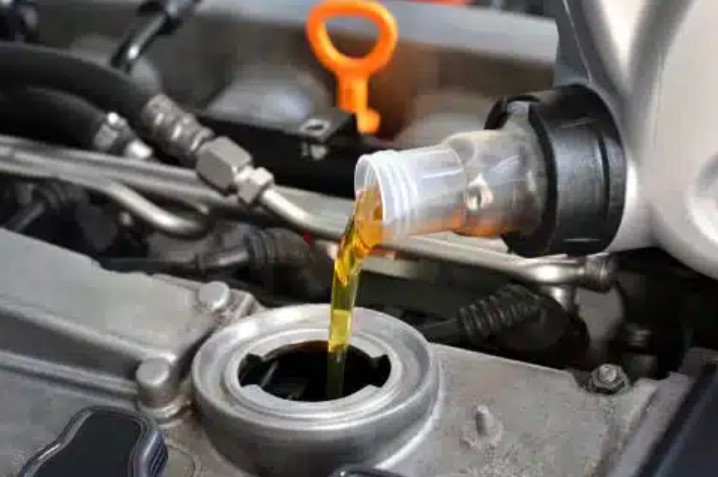Will The Check Engine Light Come On For Transmission?
Understanding the functionality of a vehicle’s check engine light is crucial for every car owner. Do you know Will The Check Engine Light Come On For Transmission? Issues are a question that often perplexe drivers. This light, a key indicator of your vehicle’s health, can illuminate for a myriad of reasons, including transmission problems. It’s essential to grasp why and how this occurs to maintain your vehicle’s optimum performance.
Key Takeaways
- The check engine light can indicate transmission problems.
- Reasons for illumination include fluid issues, sensor malfunctions, and more.
- Timely diagnosis and repair are crucial for vehicle health.
Will The Check Engine Light Come On For Transmission?
Yes, the check engine light can come on due to transmission problems. This light is part of your vehicle’s diagnostic system and can illuminate for various reasons, including issues related to the transmission such as fluid problems, sensor malfunctions, and other transmission-related faults.
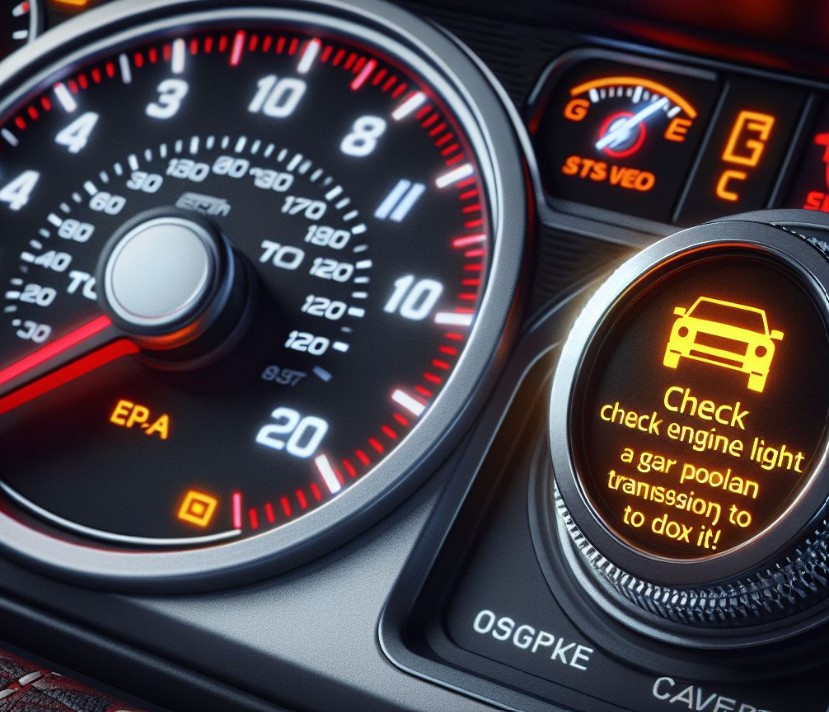
The Role of the Check Engine Light in Indicating Transmission Issues
The check engine light is a critical component of a vehicle’s diagnostic system. When it illuminates, it’s often an early warning that something is amiss with your vehicle. This includes potential transmission problems, which can range from minor issues to serious malfunctions.
Understanding Transmission-Related Warnings
- Fluid Issues: Low or dirty transmission fluid can trigger the check engine light.
- Sensor Malfunctions: Transmission sensors send data to the computer system. Faulty sensors can cause the light to turn on.
Transmission problems are a common trigger for the check engine light. However, this light could also indicate issues unrelated to the transmission. Thus, a professional diagnosis is always recommended.
Common Transmission Problems That Trigger the Check Engine Light
Transmission issues are varied and can range from simple to complex. Recognizing these problems early can save you time and money.
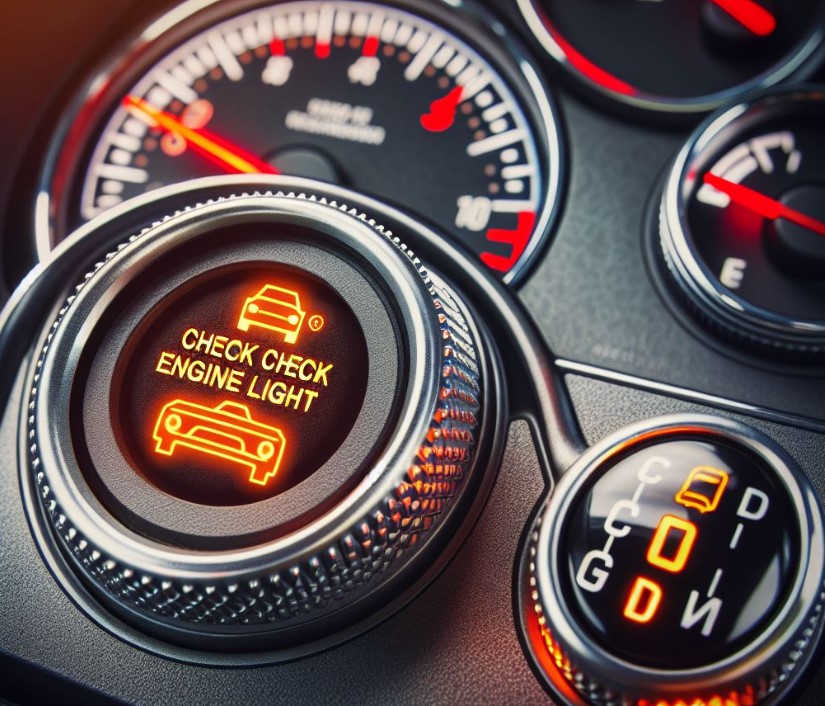
Identifying the Signs
- Slipping Gears: This occurs when the transmission fails to stay in gear.
- Delayed Engagement: A delay in gear engagement is a telltale sign of a transmission issue.
These symptoms, coupled with a lit check engine light, often point toward transmission troubles. Regular maintenance can help prevent these issues.
Diagnostic Tools for Transmission Problems
Modern vehicles are equipped with sophisticated diagnostic systems. These systems help in pinpointing the exact cause of the check engine light activation.
The Importance of OBD-II Scanners
- OBD-II scanners can read transmission-related error codes.
- These tools provide a starting point for repairs.
Using an OBD-II scanner is a reliable way to determine if your transmission is the cause of the check engine light. Professional mechanics typically use advanced diagnostic tools for a more detailed analysis.
The Impact of Neglecting Transmission Issues
Ignoring transmission problems signified by the check engine light can lead to more significant issues. This can affect your vehicle’s performance and safety.
The Consequences of Ignoring Warning Signs
- Ignored issues can escalate, leading to costly repairs.
- Driving with a faulty transmission can be dangerous.
Addressing transmission issues promptly ensures the longevity and safety of your vehicle. Regular check-ups can prevent these problems from escalating.
Maintenance Tips to Prevent Transmission Problems
Proper maintenance is key to preventing transmission issues. Regular check-ups and fluid changes can keep your vehicle running smoothly.

Best Practices for Transmission Health
- Regularly check and change the transmission fluid.
- Schedule routine maintenance for your vehicle.
Adhering to these practices helps avoid transmission problems, ensuring that the check engine light remains off for this reason.
Can Transmission Issues Cause the Check Engine Light to Illuminate?
One common question among vehicle owners is whether transmission problems can cause the check engine light to turn on. The answer is a definitive yes. Transmission issues are among the myriad reasons that can trigger this warning light.
When the transmission system encounters a problem, such as a malfunctioning sensor or a slip in the gear, the vehicle’s computer system detects these anomalies and alerts the driver by lighting up the check engine light.
The role of the transmission in a vehicle is critical for its smooth operation. It’s responsible for ensuring that the right amount of power goes to your wheels to drive at a given speed.
When this system is compromised, it not only triggers the check engine light but can also lead to decreased performance, higher fuel consumption, and in worst cases, complete vehicle breakdown.
Therefore, it’s imperative to have your car checked by a professional mechanic when you notice the check engine light, especially if it’s accompanied by unusual transmission behavior.
What Are the Common Transmission Faults Detected by the Check Engine Light?
When it comes to transmission faults, several issues can be at play. One of the most common is transmission fluid problems. This could be due to low fluid levels or the use of incorrect or contaminated fluid. ]These issues can lead to overheating and gear slippage.
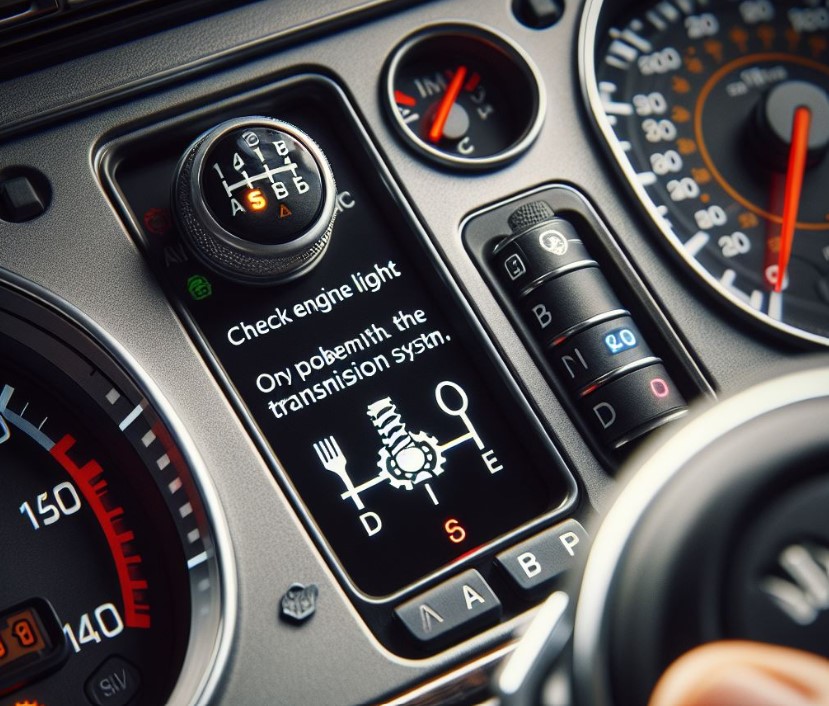
Another frequent transmission issue is related to the solenoid. The transmission solenoid controls the flow of fluid throughout the transmission. Any malfunction in the solenoid can disrupt this flow, causing the transmission to overheat or gears to malfunction.
Another aspect to consider is the transmission control module. This module is like the brain for the transmission, controlling its operation. If there’s a fault in this system, it can lead to incorrect shifting and other operational issues.
These problems are typically picked up by the vehicle’s diagnostic system, which in turn lights up the check engine light as an alert. It’s important to address these issues promptly, as neglecting them can lead to more significant and costly damages down the line.
How Can Regular Maintenance Prevent Transmission-Related Check Engine Alerts?
Regular maintenance is vital in preventing transmission-related issues that could trigger the check engine light. This involves routine checks and fluid changes, which ensure that the transmission operates smoothly.
Regular maintenance helps in identifying potential issues before they become serious. For instance, detecting a minor leak in transmission fluid early can prevent a situation where the transmission overheats or fails due to lack of lubrication.
Additionally, during regular maintenance, mechanics can update the vehicle’s software, which is crucial for the transmission’s electronic system. Outdated software can lead to miscommunications between the transmission and the vehicle’s computer system, potentially causing the check engine light to turn on.
By keeping your vehicle regularly serviced, you can avoid many of the common issues that lead to transmission problems, thus keeping the check engine light off and extending the lifespan of your vehicle’s transmission.
What Should You Do If Your Check Engine Light Comes On?
When the check engine light comes on, it’s a clear sign that your vehicle needs attention. The first step is not to panic but to assess the situation. If the light is blinking, it indicates a more severe issue, and you should stop driving the vehicle and seek professional help immediately.
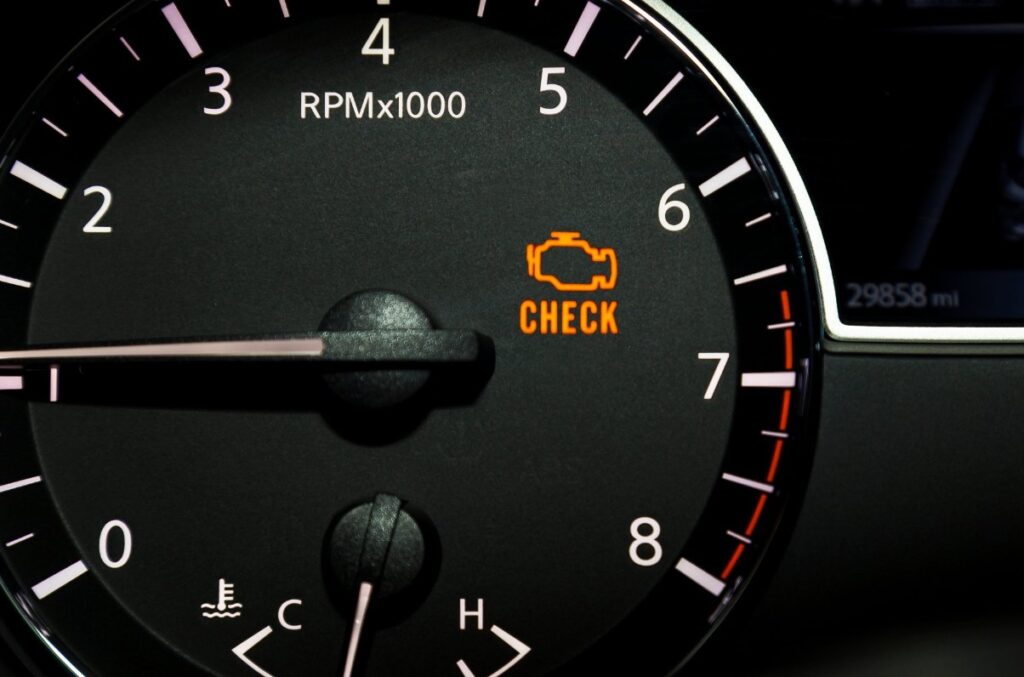
For a steady light, while it’s not an emergency, it’s still crucial to get your car checked at the earliest opportunity. It’s recommended to take your vehicle to a trusted mechanic who can run a diagnostic test to determine the exact cause of the problem.
These diagnostics are crucial as they provide specific codes that pinpoint the issue, whether it’s transmission-related or something else. Ignoring the check engine light can lead to more significant problems, which can be costlier to repair and may even compromise your safety on the road.
What Are the Risks of Ignoring Transmission Warnings on the Check Engine Light?
Ignoring the check engine light, especially when it’s signaling a transmission problem, can be risky. The transmission is a crucial component of your vehicle, and any issues with it can quickly escalate if not addressed.
Driving with a faulty transmission not only puts stress on the vehicle but can also lead to accidents due to failure in shifting gears or losing power.
Furthermore, unresolved transmission issues can lead to more extensive damage to the vehicle. What might start as a simple fix, like replacing a sensor or topping up the fluid, can evolve into a need for a complete transmission overhaul or replacement if left unchecked.
This not only becomes a matter of significant expense but can also render the vehicle unsafe to drive. Hence, it’s always safer and more economical to address transmission issues as soon as they are indicated by the check engine light.
Conclusion
In conclusion, the check engine light can indeed come on for transmission issues. It serves as an essential warning system for your vehicle, indicating potential problems that require immediate attention.
Regular maintenance, understanding the signs, and using diagnostic tools are key to addressing these issues promptly. Ignoring them can lead to severe consequences, both financially and in terms of vehicle safety.
Therefore, it’s imperative to pay attention to the check engine light and seek professional help when it indicates transmission problems.
People Also Ask
Will the check engine light reset itself after the problem is fixed?
In many cases, the check engine light will reset itself after the problem has been fixed and the vehicle has gone through a few drive cycles. However, if the light remains on, it may need to be manually reset, or there could be another issue that needs attention.
How can I reset my check engine light?
You can reset the check engine light by using an OBD-II scanner or disconnecting and then reconnecting the car’s battery. However, this should only be done after resolving the issue that caused the light to turn on in the first place.
Can a check engine light indicate a serious problem?
Yes, a check engine light can sometimes indicate a serious problem, such as a malfunctioning catalytic converter or a significant transmission issue. That’s why it’s essential to have your vehicle diagnosed promptly when this light comes on.
What is an OBD-II scanner, and how does it help?
An OBD-II (On-Board Diagnostics II) scanner is a tool that connects to your vehicle’s computer system to read diagnostic trouble codes. These codes can help identify specific issues with your vehicle, including transmission problems, and are instrumental in diagnosing the cause of a check engine light.

Welcome to the exhilarating world of Matt Rex, a professional car racer turned renowned vehicle enthusiast. Immerse yourself in his captivating blog as he shares heart-pounding adventures, expert reviews, and valuable insights on cars, trucks, jets, and more. Fuel your passion for speed and discover the beauty of vehicles through Matt’s engaging stories and meticulous expertise. Join the ever-growing community of enthusiasts who find inspiration and expert advice in Matt Rex’s blog—a digital hub where the thrill of speed meets the pursuit of knowledge.





![International 4700 T444E Oil Capacity [Answered]](https://www.turbochaos.com/wp-content/uploads/2024/01/International-4700-T444E-Oil-Capacity-768x415.jpg)
